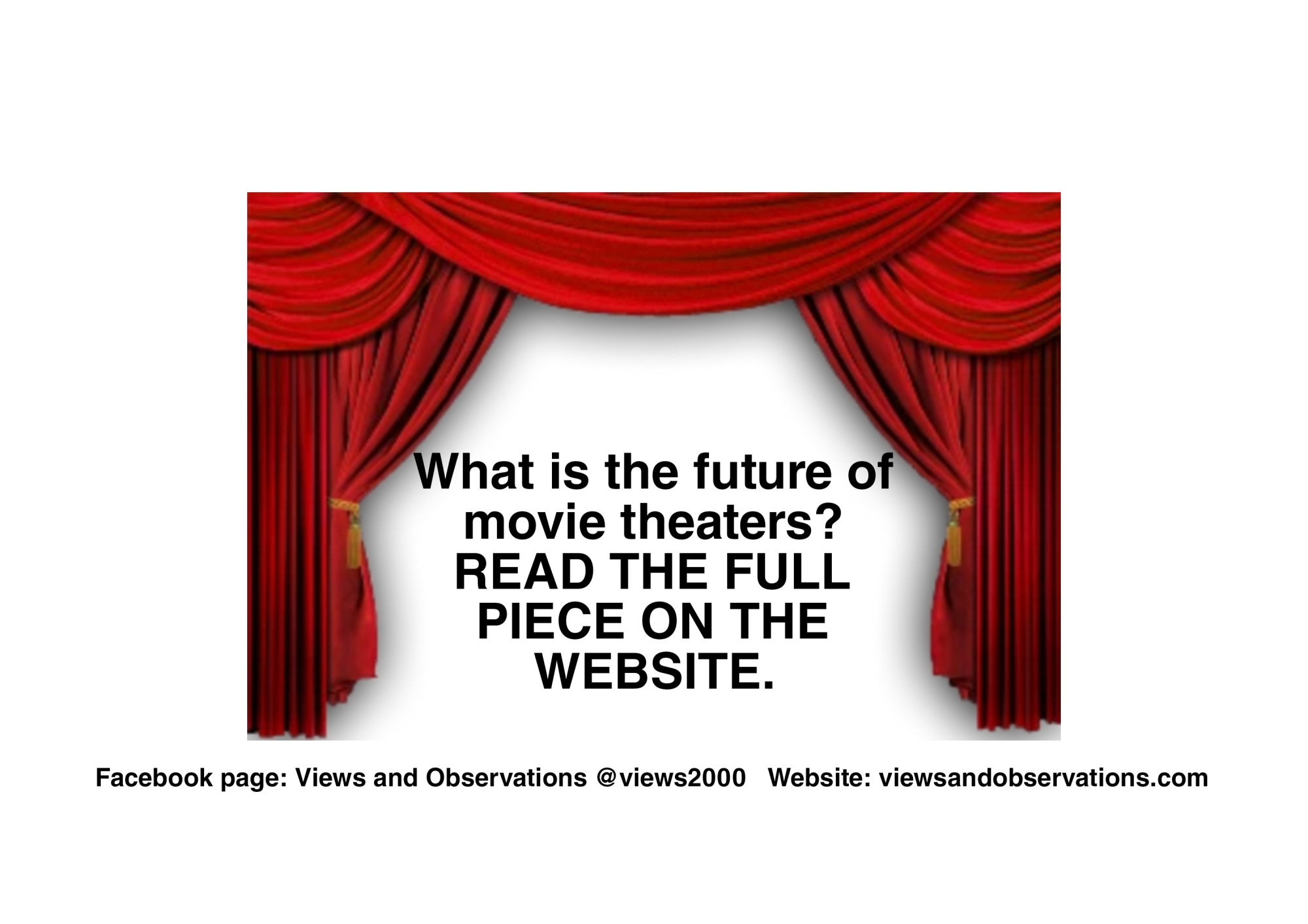Movies.
That word alone conjures up all sorts of thoughts, memories, and emotions. Drama, comedy, action, science fiction, fantasy, romance… They allow us to escape from our everyday lives so that we can be in other places, times, and worlds. We can even be other people for a little while if we want.
Kind of magical when you think about it.
As to how we watch movies, there have been significant changes over the years, especially lately. Before the existence of television, going to movie theaters is what people did to watch a film, whether it was to see a big blockbuster or a low key drama. To watch a movie, you went to a theater. Grand movie palaces were built to enhance the experience. And before the main feature began, there were often news pieces and sometimes cartoons because remember, no one had TV’s at home.
Then television was invented, and before long, virtually every household had a TV. People could watch the news at home so that the movie theaters ended up dropping news segments before the main feature. Same thing happened to the pre-feature cartoon shorts. Kids were watching Saturday morning cartoons on TV instead.
But movie theaters still persevered and were quite popular. People enjoyed seeing films on the big screen. It could be a nice escape. Get out of the house for a little while. Perhaps go on a date at the movies. VCR’s and cable TV arrived on the scene after which some people began to worry about the future of movie theaters in general. But watching a movie on the big screen was still quite popular.
These days, options for home entertainment have advanced greatly. Televisions have much higher resolutions now than those of the past, and most people have TV’s with significantly larger screens as compared to 15 years ago. In addition, streaming services (I’m talking about things like Netflix, Hulu, Amazon Prime, On Demand, etc) have exponentially expanded the number of shows and movies people have access to at home. The result has been that (even before the pandemic), people on average have been going to movie theaters less frequently as compared to the past, and a growing number stopped going altogether. When the COVID Pandemic hit. With the risk catching COVID being such a concern and increased restrictions, movie theater attendance plummeted. For a while, the number of new movies being created also went down dramatically. Many people got even more used to watching movies at home.
Now let’s be honest, with streaming services and high quality televisions, it’s really convenient to just relax and watch a movie in the comfort of your own home. Stretch out on the sofa or recliner and watch the movie whenever you want, whether that’s at 9 in the morning or 12:30 at night. And if you want to grab something to sip on or need to go to the bathroom, you simply press pause. Yep, it’s really nice. That’s why even before COVID, a growing number of people pretty much stopped going to movie theaters. And for those still going, on average, people were attending movie theaters less frequently.
In the post pandemic world, while movie attendance has certainly increased as compared to the height of the Pandemic, the numbers are still below what they were 15 or 20 years ago. Another trend being seen is that people are more likely to go to the theater to watch a big blockbuster movie as compared to a smaller drama, comedy, or independent film. With the latter types of movies, people are more likely to wait and watch them at home.
So what is the future of movie theaters. A number of smaller movie theater companies and independently owned theaters closed. Many were already struggling so that the Pandemic finished them off. The major movie theater chains reported financial losses in 2022 and have shuttered some of their locations. While I don’t think movie theaters are going to disappear in the foreseeable future, there will be changes in this new reality.
Home entertainment options will continue to improve with advancing television technology and widespread streaming services. Movie theaters will have to accept that and the fact that a significant number of people don’t go to movie theaters anymore and that those who do, often go less frequently than in the past. Tactics theater companies may attempt to try to deal with the situation could include things like increased marketing, theater improvements (perhaps focus on theaters with fewer but larger screens), expanded concessions (like maybe alcohol sales and greater food options), more comfortable seating, showing live events (such as concerts, sports, etc), and membership programs for discounts. Even with these efforts, I think the total number of movie theater screens needed will be less as a percentage of the population as compared to 20 or 30 years ago. In order to stay profitable, companies will need to figure out how many movie theater screens are actually needed in an area; otherwise, if they have too many, they will lose money. There may also be more focus on attracting people to the blockbusters while just accepting that a growing number of films such as dramas, comedies, romances, and independent films are going to go straight to steaming services and have no theatrical release at all.
In order to survive, movie theater companies will have to adapt to the changing environment and accept that home entertainment with large, high resolution televisions and expansive streaming services are the future. It will be interesting to see what happens.
